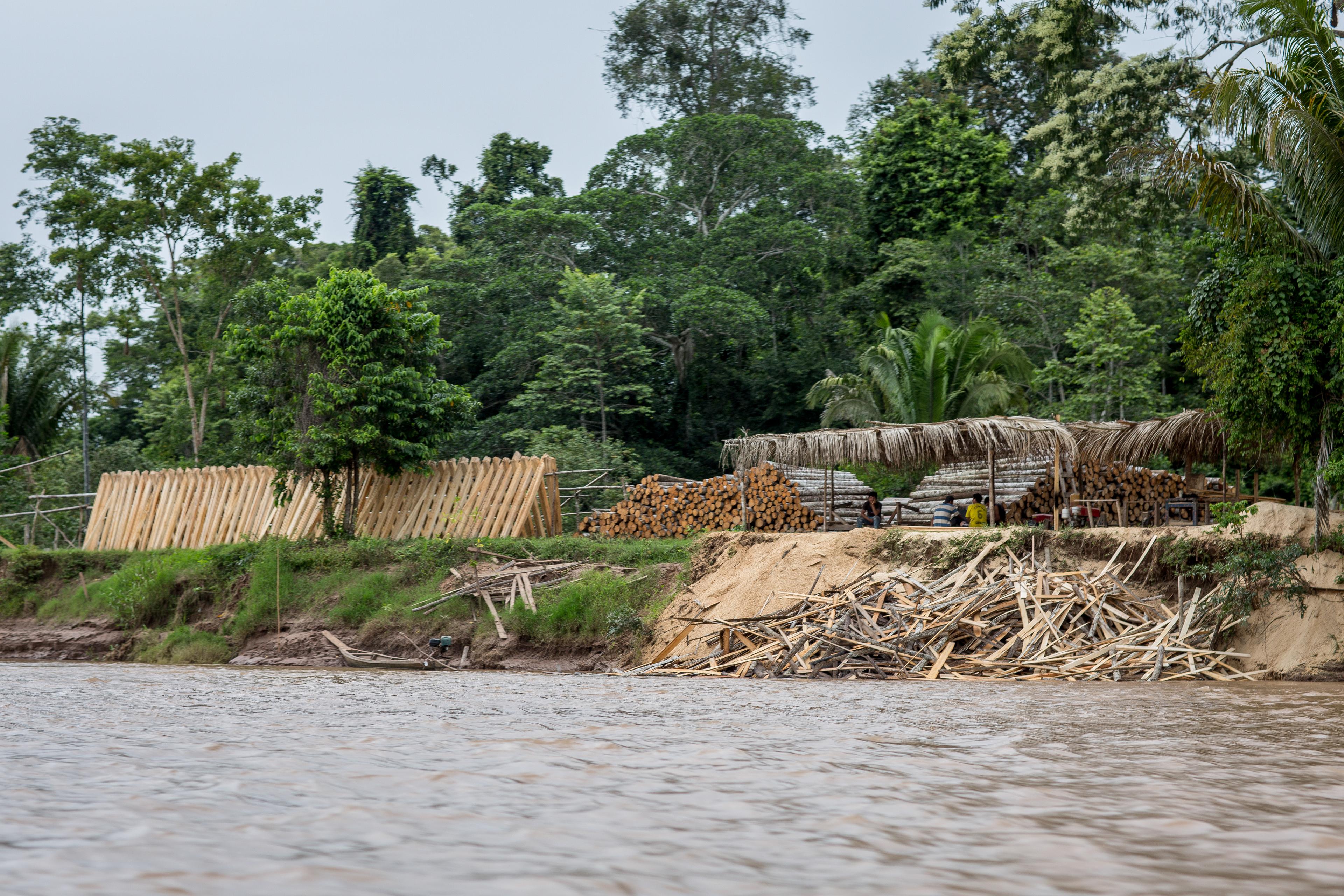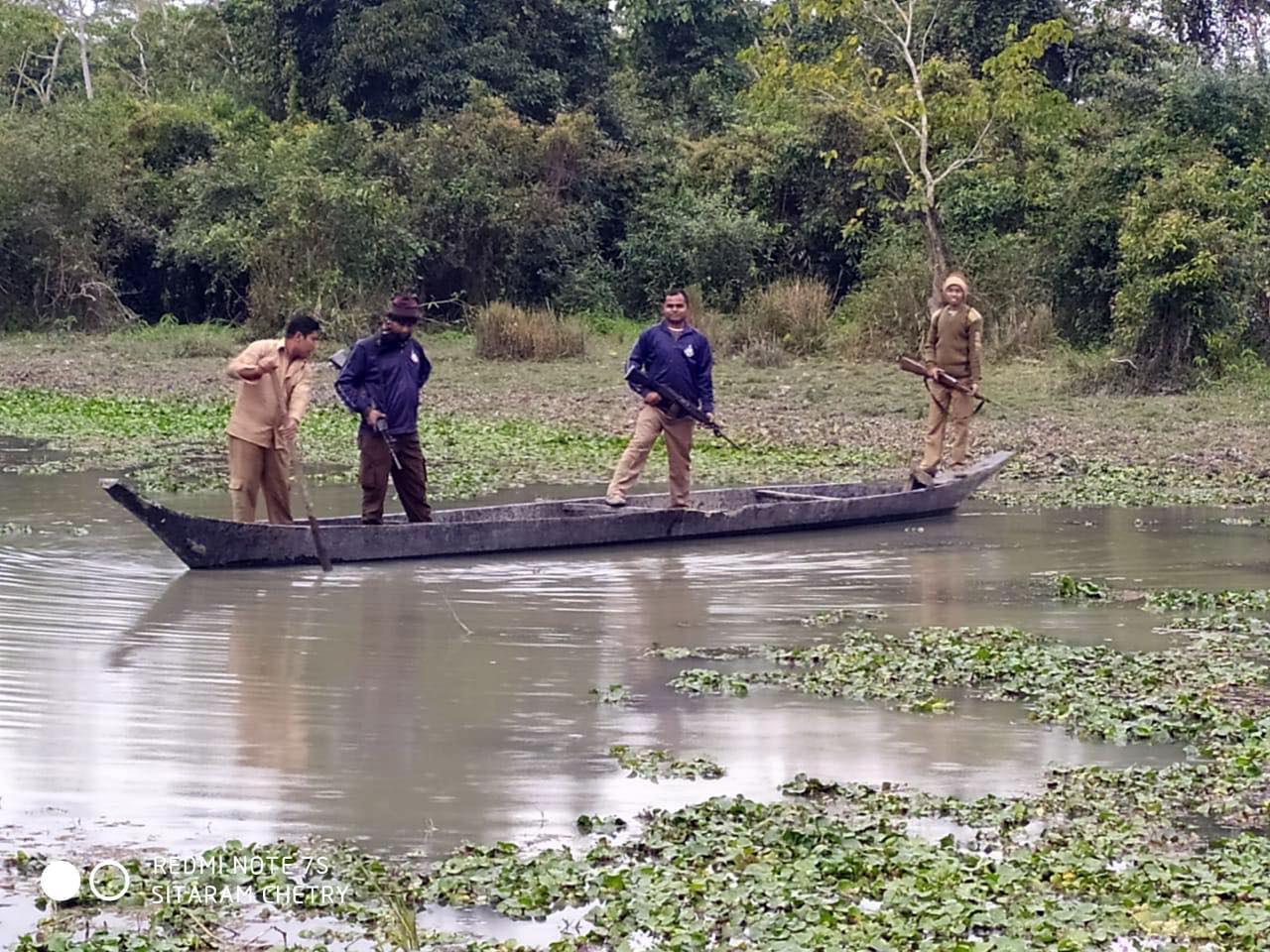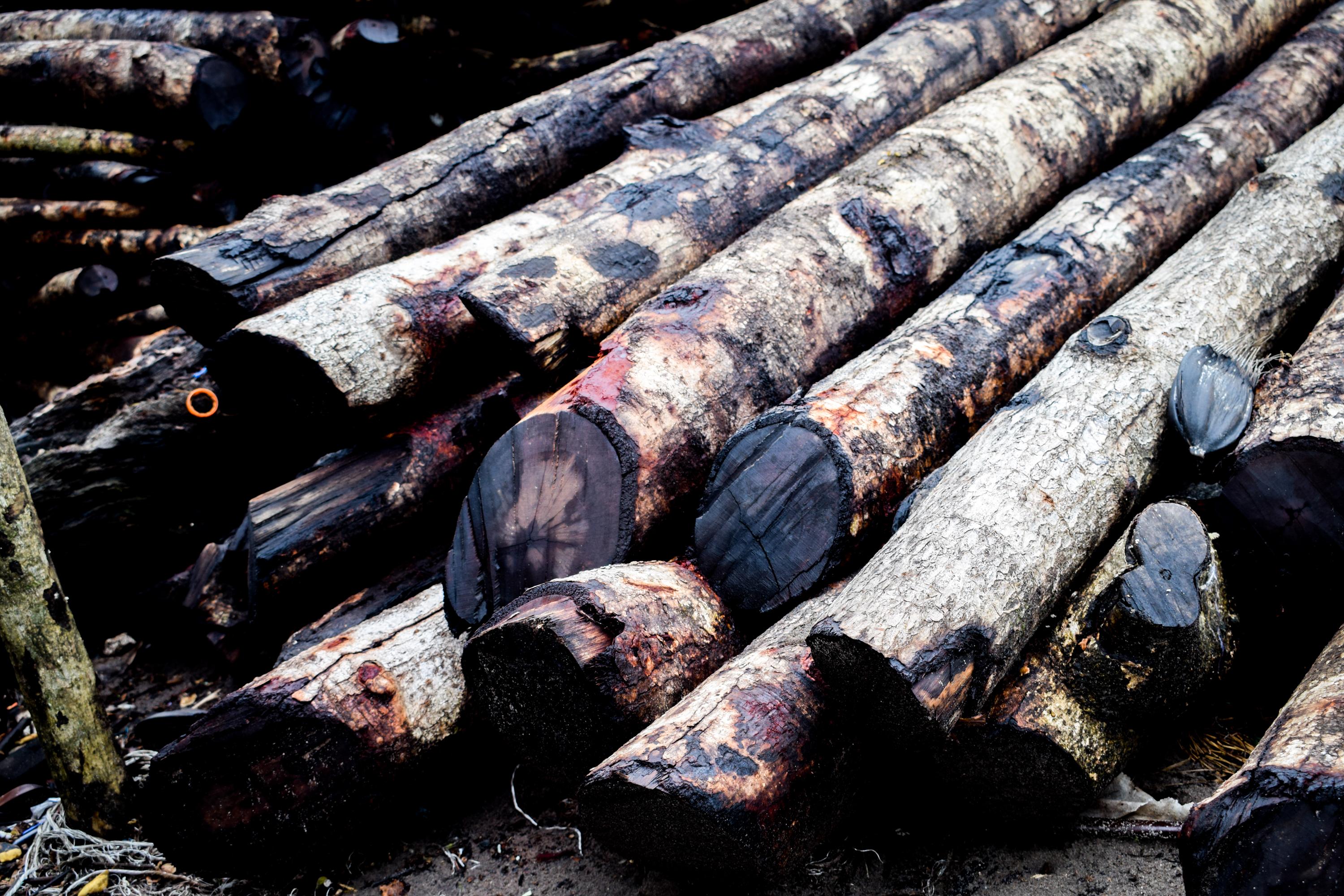Blog
Standoff in a pandemic: Land grabbing versus protection of the Peruvian Amazon
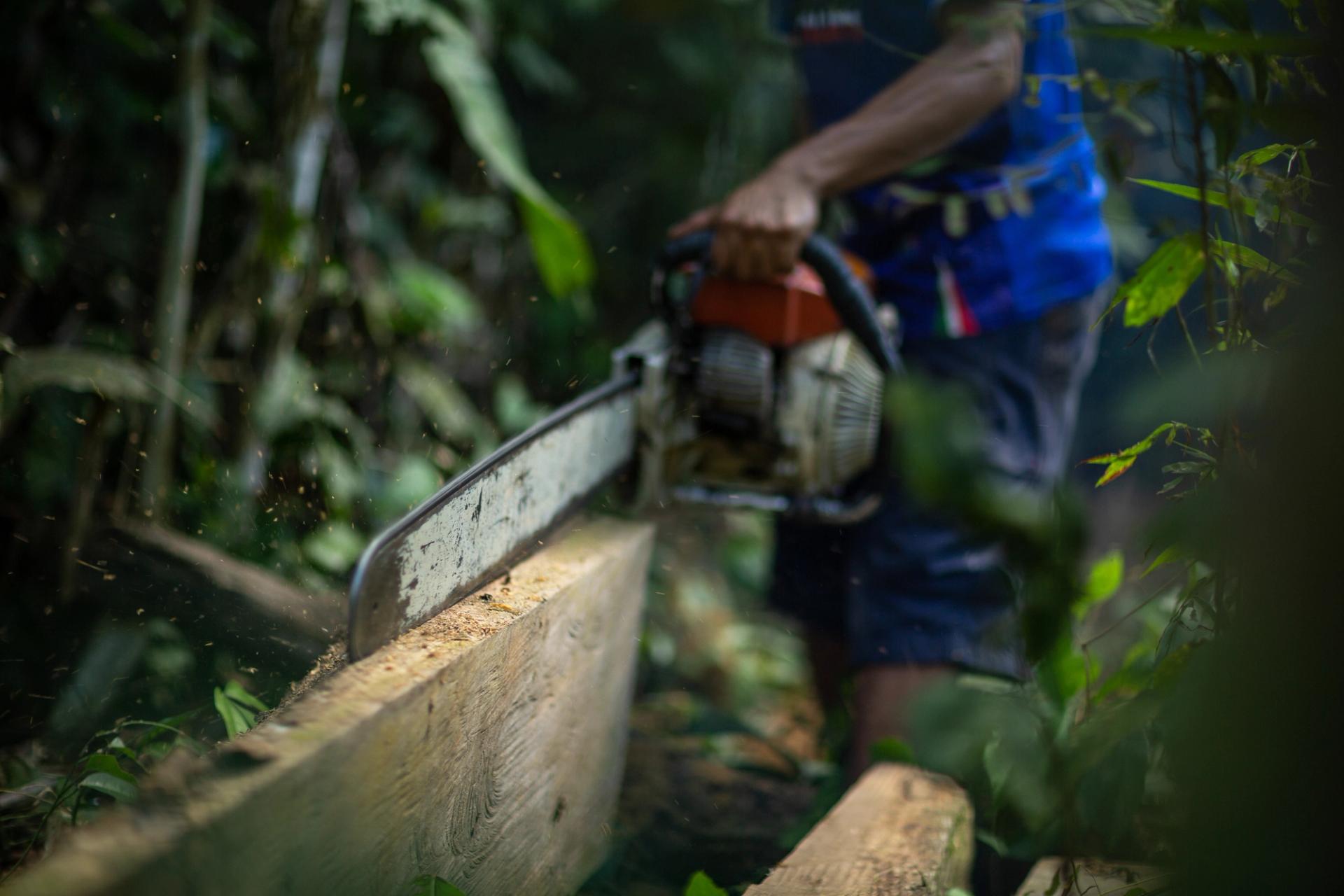
Key points
- Interventions designed to monitor and report environmental crimes (such as illegal logging and trafficking in protected species) are being undermined by shortcomings in the Peruvian state.
- Communities affected by land grabbing face major challenges when reporting to authorities such as the police, attorney general, the ombudsman, or forest authorities. Reporting has become even tougher during the Covid pandemic.
- During the pandemic, illegal activities have continued with far greater freedom. Lockdowns, as well as the redistribution of public resources to the pandemic response, have contributed to this.
- These Covid-era dynamics reveal the close relationship between a weak state presence in the Amazon, deforestation, and illegal logging.
- Collusion between local and regional officials and the perpetrators of illegal acts is undermining the effective implementation of sustainable forestry initiatives involving the indigenous population.
The challenge of implementing sustainable forest management
Strengthening governance has been at the core of recent support provided by foreign donors such as USAID to Peru’s forest sector. Monitoring activities in alliance with indigenous communities have been implemented to reduce illegal logging and the unauthorised use of forest land, for example via Community Forest Management (CFM).
CFM initiatives aim to reinforce communities’ decision-making powers through participation and equitable benefit sharing throughout the whole timber value chain. But while international actors, including USAID, have prioritised CFM for more than 30 years in Peru, just over 10% of Amazon indigenous communities are involved in forest management activities.
A weak state presence in the Amazon, as well as delays to land titling efforts, had been major bottlenecks to a more sustainable forest sector prior to the Covid pandemic. Now, the Peruvian state’s Covid response is, perversely, creating major new challenges to sustainable forest management.
The Covid pandemic: Unveiling state shortcomings
Peru’s Covid experience has been exceptionally grim. According to recent official data, more than 0.5% of the country’s population has died from Covid. This places Peru among the countries hardest hit by the pandemic, despite early measures taken by the government. For example, Peru was among the first Latin American countries to restrict civil rights to stem the spread of Covid. On 15 March 2020, with 28 confirmed cases and no deaths, the government declared a state of emergency. It closed the borders, ordered a general lockdown, banned domestic travel, and closed schools, universities, churches, and all non-essential businesses. While some of the restrictions have been lifted, as of September 2021 there were still curfews and schools remained closed.
To enforce the lockdown, police and military personnel were redeployed across the country. This has had a perverse effect on illegal activities in the Peruvian Amazon, since some forest police patrols were reduced by the redeployments. Illegal exploitation of the Amazon has increased during the lockdown, reflected in the rise in deforestation. According to the National Office of Forestry and Wildlife Control (SERFOR), in 2020, 203,272 ha. of forest were lost. This represents 37% more forest loss than that reported in 2019. Deforestation has been concentrated along ten fronts, with five of these in Ucayali and one in an area shared by Ucayali and Huánuco. The latter front has been the epicenter of violent attacks on indigenous leaders active in the protection of their territory. This fact demonstrates the close relationship between deforestation of the Amazon and violence against indigenous people in Peru.
On 29 June 2021, Mario Marcos López Huanca, Asháninka leader from Pasco and secretary of the indigenous organisation that co-administers the El Sira Communal Reserve, between Ucayali and Pasco (EcoSira), was shot in the head. After four days of agony, he died in Ucayali where he was taken for treatment after the attack. The area is haunted by drug trafficking and illegal logging. He is the seventh environmental defender killed in Peru since the pandemic began. Indigenous groups claim these killings are a direct consequence of their attempts to gain land titles and protect their territories, but little has yet been done to bring the perpetrators to justice or to protect the indigenous communities.
A weak state response before the pandemic
The inability of the state to protect indigenous leaders raises questions about officials’ capacity and interest to implement measures to protect the Amazon or its inhabitants and guardians. Historically, the Peruvian Amazon and its indigenous population have been neglected by the state. The state’s presence in the area is weak, demonstrated for example by the lack of essential public services. Although Amazonian communities live close to Peru’s largest water basin, just over 60% of them do not have access to a water pipeline or well.
The state’s weak presence is also exemplified by the absence of public offices close to rural communities in the Amazon, which creates major bureaucratic hurdles for community land registrations. Programmes promoting forest preservation, and the sustainable exploitation of the Amazon, require communities to present their land titles with updated boundaries and documents proving they have been registered and recognised by the authorities. This is hard to do when the relevant public offices are so far away from the communities they are meant to serve. What’s more, the Ombudsman’s office has shown that the same authorities in the same region of the country take much longer to process community land titles than individual titles. This reveals a distinct de-prioritisation of the formalisation of community land rights.
In addition, some public officials have been directly involved in land trafficking. One example is the Cocha Anía case in Ucayali. According to the public prosecutor, in 2015, officials in Ucayali allocated to various individuals 128 plots of land (approximately 3,600 ha.) from territory claimed by the Santa Clara de Uchunya community. Moreover, in June 2021, Huánuco’s regional authorities created the village of Alianza Santa Martha. For indigenous organisations, this village is located within the titled territory of an indigenous community.
Delays to community land titling efforts and the grabbing of indigenous territory by local and regional authorities are perceived by indigenous communities as a form of ‘corruption’. This corruption is fuelling a conflict between indigenous communities and ‘colonisers’, some of whom are linked to illicit activities such as illegal crop cultivation and illegal logging. These activities are contributing to the ongoing insecurity faced by the indigenous population in the Peruvian Amazon. It also creates major barriers to the implementation of interventions aimed to promote sustainable forestry in the region.
About the research
This blog post summarises early findings from the New Evidence Research Approach (NERA) initiative of the Targeting Natural Resource Corruption (TNRC) project. The Peru component aims to improve understanding of the actors and interests involved in the exploitation of timber in the Peruvian Amazon, particularly how corruption takes place, contributes to illegal logging and deforestation, and its impacts on local communities.
The focus is on two case studies from two regions (Pasco and Ucayali), where the USAID Peru Bosques and Pro Bosques projects have intervened (directly with permanent presence in Ucayali, and with targeted interventions in Pasco).
The research further seeks to:
- facilitate understanding of the complexity of targeting corruption in a single rainforest ecosystem of global importance;
- help us appreciate the impacts of corruption; and
- improve understanding of how international projects work in local Peruvian contexts.
The NERA initiative is led by the U4 Anti-Corruption Resource Centre and seeks to improve evidence on the ways context affects the outcomes of anti-corruption-related initiatives in renewable natural resource sectors.
***
This Blog post is made possible by the generous support of the American people through the United States Agency for International Development (USAID). The contents are the responsibility of the author(s) and do not necessarily reflect the views of USAID or the United States Government.
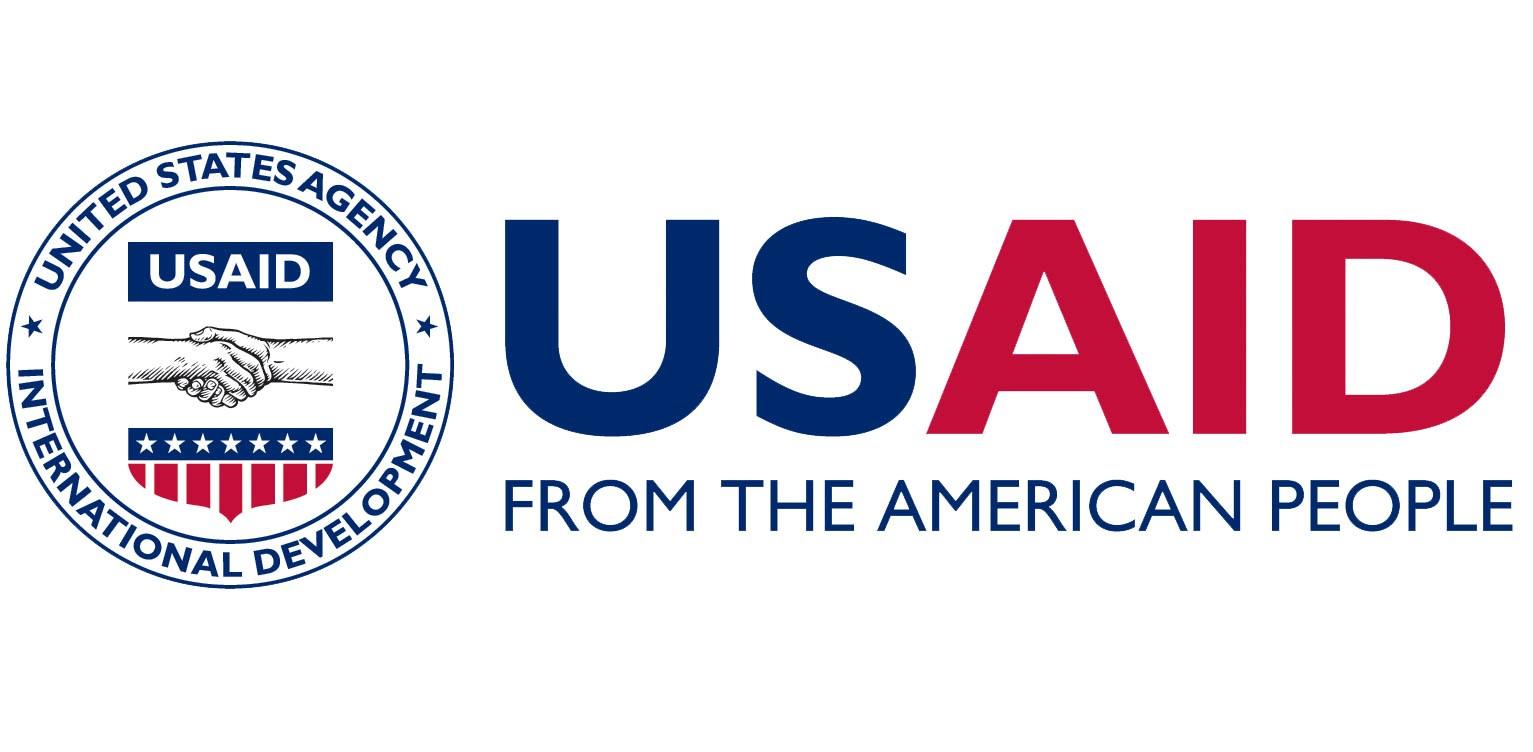
Disclaimer
All views in this text are the author(s)’, and may differ from the U4 partner agencies’ policies.
This work is licenced under a Creative Commons Attribution-NonCommercial-NoDerivatives 4.0 International licence (CC BY-NC-ND 4.0)
